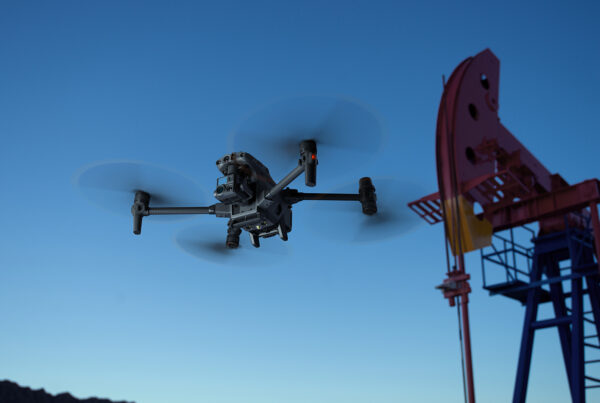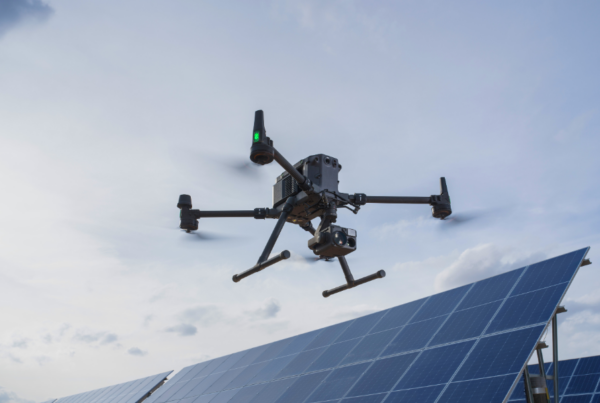The Autel Dragonfish is an incredibly powerful VTOL platform—as a drone with one of the longest flight times, the Dragonfish has become popular with field inspectors, particularly in the energy industry. Whether inspectors are checking high-voltage powerlines, solar panels, or wind turbines, Drones offer a fast, low-risk alternative, and the Autel’s Dragonfish flight and battery efficiency, along with its powerful payload options has helped optimize inspection workflows.
Low-Risk, High-Efficiency Inspections
High-voltage powerlines can extend for miles; regular inspection is required in order to keep them up to code, and manual inspections expose technicians to many risks. Inspectors that leverage drones can conduct quick visual inspections of transmission towers, without the need of leaving the ground. Since the Dragonfish can cover up to 108km/h at max speed, and the Dragonfish Pro model can fly for up to 158 minutes, inspectors can cover approximately 248km (~154m) in a single flight, significantly cutting down job time, and helping increase profit margins.

Data at First Sight
With three different models— the Dragonfish Standard, Lite, and Pro, combined with five proprietary payloads, organizations can customize the drone to any specific use case.
Payloads include the Z2, T3, T3H, L20T, and L50T. The Z2 offers 4K 20x optical zoom, along with a 12 MP wide-angle camera; the T3 payload offers all those capabilities, plus a 640×512 high-resolution infrared camera. The T3H, on the other hand, offers a 12 MP zoom, a powerful 1280×1024 infrared camera, and a laser distance measurement radar. Infrared cameras are ideal inspection tools for electric maintenance; they are capable of capturing heat data, which makes them suitable for powerline inspections, as well as solar panel maintenance and inspection.
The L20T and the L50T are the most powerful payloads offered by the Dragonfish lineup; they both have 4K optical zoom, with the L20T offering 20x, and the L50T offering 50x. Additionally, they both feature laser distance measurement radars, and a 12 MP wide-angle lens. The L50T offers more resolution on the infrared camera, offering 1280×1024 resolution, over the L20T’s 640×512 resolution.
The powerful performance of Autel’s payloads, combined with the Dragonfish’s advanced safety and redundancy features provided by Autel’s advanced AI, grant pilots safety, stability, and reliability for superior performance. With intelligent sensors and obstacle avoidance, pilots navigating around complex structures like powerlines and wind turbines can fly seamlessly while gathering the necessary data to complete inspections. The integrated high-quality sensors monitor airspeed velocity, and adjust accordingly based on changing flight conditions in real time— this minimizes potential crashes during inspections. The advanced dual-redundant CAN bus communication system also protects the Dragonfish from electromagnetic interference, which is critical while inspecting live power zones.
The Dragonfish was also designed with a built-in ADS-B receiver— the millimeter-wave radar helps the drone detect obstacles up to 200m away, and adjust both height and speed in order to avoid obstacles and execute fast, efficient flights. The Dragonfish also features automatic transition; it will automatically transition to multi-rotor mode if adverse conditions cause a fixed-winged flight to stall or become unsustainable. This means that the Dragonfish can automatically choose which mode to fly for the best performance.
The unique tilt-rotor design which enables vertical takeoff and landing allows inspectors to deploy as quickly as 5 minutes as the whole system self-checks in as little as 5 seconds, helping teams complete large inspection jobs in less time. The ultra-bright on the Autel Ground Control Station has a touchscreen of 1,000 nits, and the brightness allows for enhanced visibility in both direct sunlight and lowlight environments. It has an ultra HD resolution of 2048×1536, 4.5 hours of battery life, 256G internal storage, and can support up to 18.6 miles of operation transmission for large data storage.
Discover everything the Dragonfish has to offer. Interested in learning more or seeing the Dragonfish in flight? Connect with our team of experts for more information.



